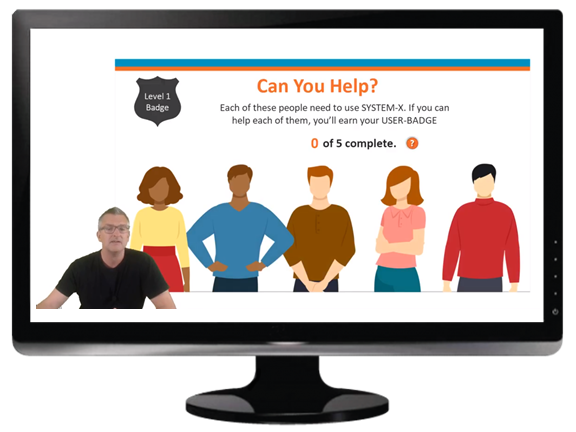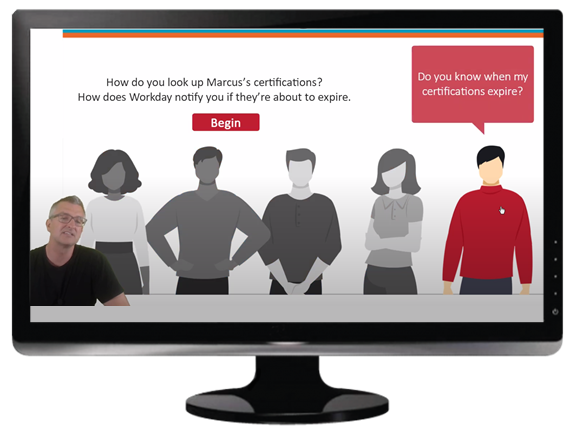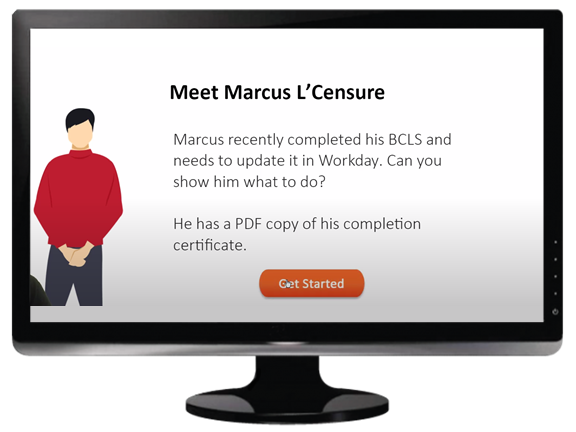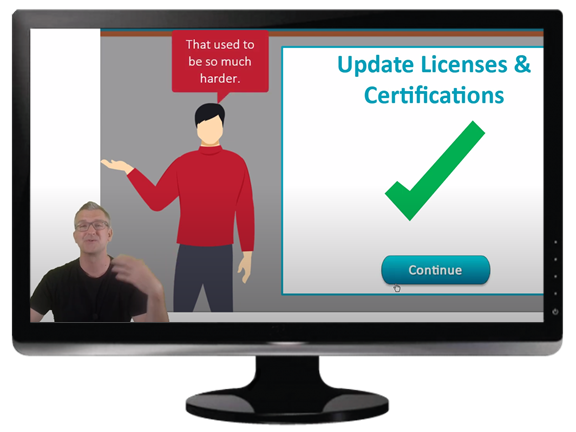Software Training eLearning Example - Use Case Approach
No-ZZZZ Software Training
When you need to show people how to use software, it’s good to have a strategy or two that helps you avoid putting them to sleep. Our friend Karl G. Richter recently energized us when he showed us his approach.

Flip the Script for More Interest
In his snappy sample for HR software training, Karl has flipped the usual script. Avoiding the boring software walk-through, he instead starts right in with the tasks everyday users will be looking to complete.

Software Training Doesn’t Have to Be a Snooze
Think your learners are going to be excited about completing your software training? Probably not, but you can still surprise them awake! Why not follow Karl’s lead and use characters that represent the real world use-cases your viewers are curious about? From there, it’s easy to create memorable training scenarios around tasks users perform in the real world, completely avoiding an endless string of “feature” training.
Answer the Real Questions
Most users come to software training with a specific question in mind, so no need to force them through dozens of software simulations covering every feature of your software to find their answer. In fact, save the deep-dive simulations for your knowledge base or manual and answer instead what tasks an actual user will need to perform in the real world? Karl does a great job of taking someone through five of the most often-used workflows around on-the job tasks, pointing up the common mistakes, and helping viewers avoid getting frustrated. BOOM! Questions answered, training complete.


Each Character Represents a Use Case
There’s no way that someone is going to retain all the information from a deep dive walkthrough. But tying a task to a character is memorable. When performing a similar task in the future, they can remember the experience of processing named characters each of whom are ready to aid recall when it’s needed most. Why? Stories help our brains understand why the software is needed. Karl’s stories show why a person would use the software and explain how they got the job done. Each story reels the viewer in, while also delivering the steps needed should they find themselves living the same scenario.
Building Goes Faster This Way
You may be thinking, “I don’t have time” or “I’m already so busy, how could I possibly do my software training this way?” Well, stories are the cheapest and easiest to both add engagement and cut to the most important information in the training. Targeting means you’re not spending precious hours talking about the more arcane aspects of the software … and that’s a huge time-saver!

Added bonus! Karl does some high-level (but not difficult) stuff in Storyline with variables to track the number of stories completed, quickly change character states, and other niftiness worth knowing about. Click on those links to boost your Storyline skills!
Karl’s sample employs the fully-customizable Designer Fluid characters from the eLearningArt library. Karl represents himself!
